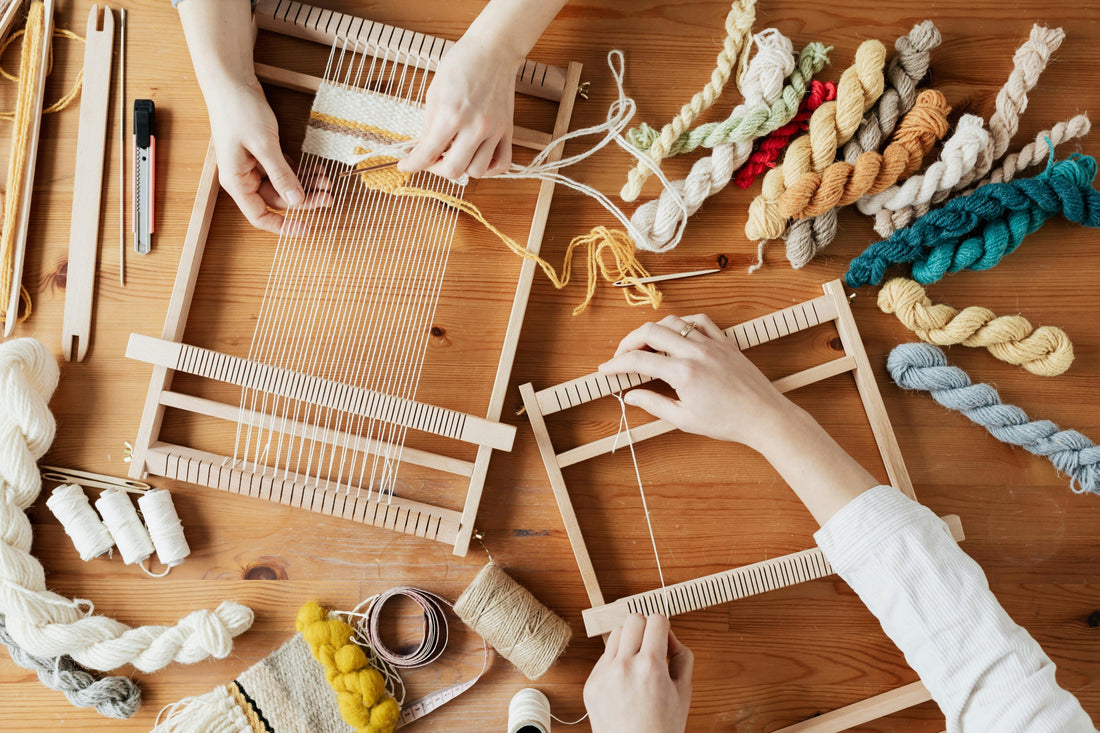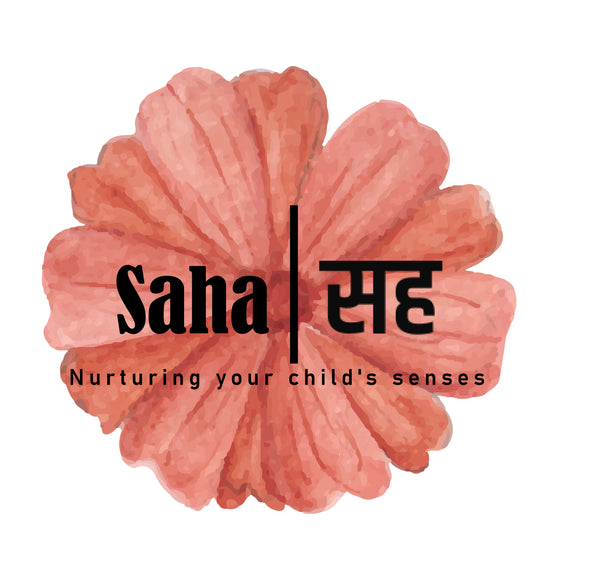
5 Benefits of Handwork in Early Childhood
Share
In our fast-paced, tech-heavy world, the simple, timeless practice of handwork has never been more relevant, especially for young children. Whether it’s sewing, knitting, weaving, or simple paper crafts, handwork offers children a deep, hands-on way to connect with their surroundings and themselves. Rooted in Waldorf education and supported by research in child development, handwork does far more than produce pretty crafts, it helps nurture growing bodies, minds, and hearts.
Below, we explore five powerful benefits of introducing handwork in early childhood and why you may want to pick up a needle, thread, or bit of yarn with your little ones today.
1. Develops Fine Motor Skills and Coordination
One of the most tangible benefits of handwork is how it strengthens fine motor skills. In early childhood, children’s small hand muscles are still developing. Activities like stitching, threading beads, weaving, or finger knitting help refine these movements by training the muscles to work in a precise, controlled way.
According to occupational therapy experts, well-developed fine motor skills are foundational for tasks such as writing, drawing, cutting with scissors, and even using buttons and zippers independently (Case-Smith & O'Brien, 2014). Waldorf education emphasizes handwork precisely for this reason: it naturally builds dexterity and prepares children for academic and daily life tasks without forcing them too soon into formal writing exercises.
A child sewing a simple shape or knitting a basic cord learns to coordinate both hands, strengthen hand–eye connection, and focus on small, repeatable actions. These seemingly simple activities quietly build neurological pathways that support literacy and numeracy later on.
2. Builds Concentration and Patience
In a world of fast clicks and instant gratification, handwork invites children to slow down. When a child knits row after row or weaves a small mat, they experience the power of quiet, repetitive work. This naturally extends their attention span and teaches them to persist through small challenges.
The calming, rhythmic motion of handwork can even produce meditative states, helping children manage emotions and settle their minds (Gibson, 2012). Many teachers and parents report that children who practice handwork tend to show more resilience and patience in other areas of learning as well.
Through repeated practice, children learn that beautiful results take time. They see their own progress unfolding in their hands — stitch by stitch, row by row. This builds a healthy relationship with effort and reward, laying groundwork for a lifelong growth mindset.
3. Sparks Creativity and Problem-Solving
Handwork is inherently open-ended. A child can start with a simple plan but may adjust the shape, colors, or materials along the way. Unlike store-bought toys with fixed outcomes, handwork projects encourage flexible thinking and problem-solving.
Research shows that open-ended creative activities support cognitive growth by engaging multiple parts of the brain at once (Ginsburg, 2007). As children make choices like which thread to use, how to fix a loose knot, or how to finish an edge, they learn to plan, adapt, and improvise.
In Waldorf settings, the emphasis is never on perfection. The goal is for children to express themselves through their hands. Every mistake becomes an opportunity to think differently and try again, a powerful life skill far beyond the craft table.
4. Integrates Head, Heart, and Hands
Rudolf Steiner, the founder of Waldorf education, believed true learning must engage the head, heart, and hands. Handwork embodies this beautifully: the child imagines (head), feels joy and care for the craft (heart), and brings it to life through action (hands).
This holistic approach balances intellect with will and emotion. It’s why Waldorf educators see handwork not as an “extra” but as an essential part of a child’s early years.
Making something useful — like a small pouch or simple doll — gives children a sense of purpose. They experience the satisfaction of creating beauty with their own effort, strengthening self-esteem and their connection to the world around them (Edwards, 2002).
5. Builds Confidence, Calm, and Connection
Finishing a handmade project, no matter how simple, gives young children a powerful sense of accomplishment. For many, their first handwork piece becomes a treasured keepsake. This sense of pride fosters confidence and encourages independence.
Moreover, the act of handwork is deeply calming. Research has found that repetitive, rhythmic motions like knitting can help lower stress and anxiety, not just in adults, but in children too (Riley et al., 2013).
Handwork can also build warm social connections. Many cultures have a rich tradition of craft circles, groups of children and adults working side by side, sharing stories as they work with their hands. This collective spirit of making together strengthens family and community bonds, while passing down practical and cultural wisdom.
Bringing Handwork into Your Home
The beauty of handwork is that it requires little more than simple materials, time, and willingness to learn alongside your child. You don’t need to be an expert — just start small. Try threading big wooden beads onto yarn, finger knitting, or stitching with burlap and a blunt needle.
Follow your child’s pace. Let mistakes happen. Celebrate the imperfections — they are signs of effort, learning, and growing skill.
Whether you follow a Waldorf or Montessori-inspired path or simply want to slow down and make something beautiful, handwork is a timeless gift you can share with your child.
Final Thoughts
In our plugged-in age, handwork remains a powerful reminder that real, meaningful learning starts with our hands. It nurtures patience, focus, creativity, and connection — qualities every child needs, now more than ever.
So, roll up your sleeves, pick up that yarn or needle, and join your child in the gentle, joyful rhythm of handwork. You may just find it works wonders for you, too.
References
- Case-Smith, J., & O'Brien, J. C. (2014). Occupational therapy for children and adolescents (7th ed.). Elsevier Health Sciences.
- Edwards, C. P. (2002). Three approaches from Europe: Waldorf, Montessori, and Reggio Emilia. Early Childhood Research & Practice, 4(1).
- Gibson, R. (2012). Learning through play: A work-based approach for the early years professional. Continuum International Publishing Group.
- Ginsburg, K. R. (2007). The importance of play in promoting healthy child development and maintaining strong parent-child bonds. Pediatrics, 119(1), 182–191.
- Riley, J., Corkhill, B., & Morris, C. (2013). The benefits of knitting for personal and social wellbeing in adulthood: Findings from an international survey. The British Journal of Occupational Therapy, 76(2), 50–57.
